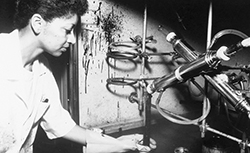In 1950, Texas A&M College already enjoyed a 40-year reputation for innovative road materials research. That, combined with the college’s land-grant mission of public service, made it a natural home for the Texas A&M Transportation Institute (TTI).
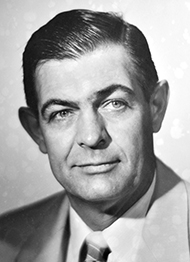
The shared connection between academic learning and applied research was embodied in TTI’s first director, Fred Benson, who served as dean of the College of Engineering and as a faculty member in Texas A&M’s Civil Engineering (CE) Department. He and TTI’s other founding fathers — Gibb Gilchrist, Dewitt C. Greer and Thomas H. MacDonald — recognized that all Texans could benefit from combining the limitless energy of young minds eager to learn with the Texas Highway Department’s need for real-world solutions to the state’s transportation problems.
It was perfect timing for the CE/TTI partnership to begin. Texas, like the rest of the nation, was gearing up to modernize its transportation system, an initiative codified into policy in the Interstate Highway and Defense Act of 1957 championed by President Dwight D. Eisenhower. Innovation in transportation became, for the first time, a matter of national policy — and a source of research funding — aimed at improving not only the nation’s defense network, but also U.S. economic competitiveness.
“For nearly 70 years, TTI has worked hand in glove with Texas A&M University — and especially the Zachry Department of Civil Engineering — to provide Texas and the nation with research innovations that increase transportation mobility and safety,” states Greg Winfree, TTI agency director. “Our work together has consistently produced whole solutions greater than the sum of their parts.”
Areas of Shared Research Excellence
Although TTI and CE have worked together across the spectrum of transportation research over the years, four principal research areas came into focus in support of the modernization initiatives: structures; materials and pavements; geotechnical and geoenvironmental; and traffic operations, safety and human factors.
Structures
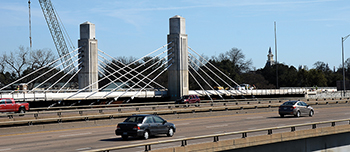
In the latter half of the 20th century, the CE/TTI team expanded the knowledge of how to use new materials and designs for bridge structures. Recent research has focused on prestressed concrete bridges and tested the efficacy of a spread-slab beam design for short-span bridges, as well as examined the use of spliced, precast concrete girders to achieve longer spans. CE/TTI experts have also advanced new methods to inspect, evaluate and strengthen existing bridge structures. Through it all, researchers have worked hand in hand with the Texas Department of Transportation to improve construction practices that yield stronger, longer-lasting facilities.
Materials and Pavements
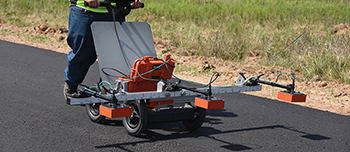
After establishing the Pavement Test Facility in 1965 at what is now Texas A&M’s RELLIS Campus, early research leveraged the college’s recognized expertise in materials and pavements to improve the quality and consistency of asphalt pavements as major construction on the Interstate Highway System commenced. CE/TTI researchers have since helped set state and national asphalt binder and mixture specification standards; applied technologies like pavement materials recycling, ground-penetrating radar and the total pavement acceptance device to extend roadway life; and trained transportation professionals worldwide to apply best practices.
Traffic Operations, Safety and Human Factors
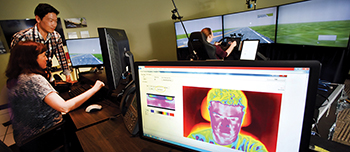
Experts from CE and TTI have worked together to enhance traffic safety through improving signage and forgiving roadside crash barriers, increasing traffic operations efficiency (via, for example, intelligent transportation systems), and studying human-vehicle interactions in TTI’s driving simulator. TTI’s current connected-automated vehicle research continues the emphasis on making smarter transportation systems that are also safer and more reliable. In the area of managed lanes (MLs), a research focus harkening back to the 1990s, CE and TTI experts are currently teaming with professors from economics, agricultural economics and phycology in a groundbreaking effort to better understand travelers’ use of MLs.
Geotechnical and Geoenvironmental
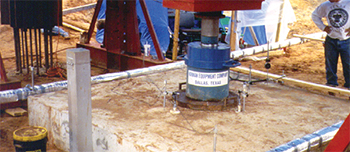
As interstate highway structures built in the latter half of the 20th century began to show signs of wear and tear over time, CE/TTI experts studied issues like slope stabilization on highway embankments, retaining walls for highway overpasses and deep excavations, optimization of large foundation elements, and ways to evaluate and remediate scour on bridges to prevent structural failure. As the effects of climate change become more evident today, ensuring the transportation system is resilient and responsive in extreme weather conditions is a current research imperative for this area.
Putting Our Best Practices Forward
Working together across disciplinary lines has never been more important. Transportation is experiencing a technological revolution with, for example, the advent of unmanned aerial vehicles and self-driving cars. Integrating different technologies and the standards that monitor them — from how autonomous vehicles will talk to the roadside and each other to the policies that protect the driving public — is a current challenge that needs to be met. And yet, autonomous vehicles are coming. In 2017, the U.S. House of Representatives passed the SELF DRIVE Act aimed at encouraging innovation to promote the rollout of self-driving cars more quickly.

To meet this fast-moving future, The Texas A&M University System’s RELLIS Campus is creating a new standard for matching applied research with technology development and educational opportunities. Recently opened, the state-of-the-art facilities at the Center for Infrastructure Renewal (CIR) will encourage CE, TTI and Texas A&M Engineering Experiment Station (TEES) researchers to develop advanced and sustainable materials and structural systems to enhance safety, resiliency and durability of infrastructure while extending its life at a reduced cost.
“A unique advantage of the research and training enterprise of CIR is the partnership between TEES faculty and TTI research scientists and engineers,” explains CIR Director Zachary Grasley. “This partnership couples the highly specialized research by faculty — assisted by student researchers — with the ability of TTI to take such research and adapt it for real, practical applications.”
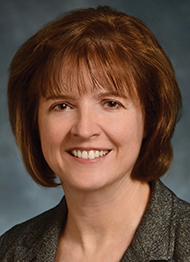
As Grasley notes, students will continue to work alongside Texas A&M researchers at CIR to find practical answers to research questions TTI Director Benson and his Institute co-founders could never have imagined in 1950. The greatest resource to help us find those answers — kindled by a passion for learning in CE’s classrooms and nourished by a need for knowledge in TTI’s fieldwork — is the same as it’s always been: young minds capable of fresh thinking aimed squarely at troubleshooting the challenges of ensuring mobility, resilience and safety in our nation’s transportation system.
“The successful working relationship between Texas A&M’s Zachry Department of Civil Engineering and TTI is indicative of the kind of interdepartmental teamwork that’s made the College of Engineering one of the top engineering schools in the country,” says Vice Chancellor and Dean of Engineering M. Katherine Banks. “As we explore new applied research opportunities at the A&M System’s RELLIS facilities like CIR, I see those Aggie bonds only growing stronger in the future.”
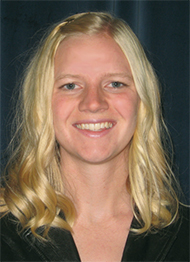
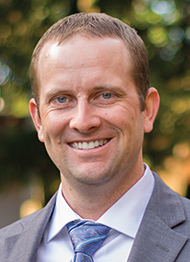
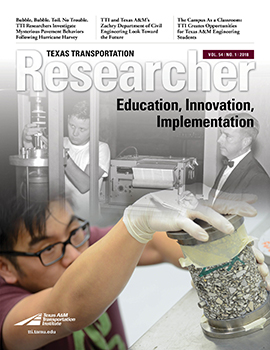

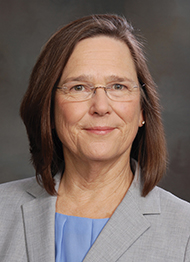 “In the history of our partnership with TTI, together we have strived to innovate for a variety of engineering infrastructure challenges. Our collaborations together across specialized research areas have brought countless benefits for infrastructure modernization and society, and are a testament to the value of this partnership.”
“In the history of our partnership with TTI, together we have strived to innovate for a variety of engineering infrastructure challenges. Our collaborations together across specialized research areas have brought countless benefits for infrastructure modernization and society, and are a testament to the value of this partnership.”